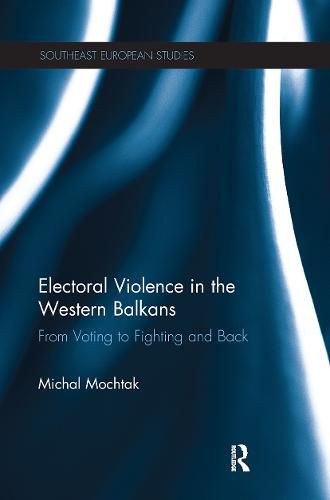Readings Newsletter
Become a Readings Member to make your shopping experience even easier.
Sign in or sign up for free!
You’re not far away from qualifying for FREE standard shipping within Australia
You’ve qualified for FREE standard shipping within Australia
The cart is loading…






Since the end of the Cold War there have been a number of cases where the democratization process has been turbulent, or even violent. Addressing electoral violence, its evolution and impact in the Western Balkans, this book explores the conflict logic of election and tries to understand its basic patterns. Two decades of electoral competition in the region are analysed to identify an interesting evolution of electoral violence in terms of forms, actors, motivations and dynamics.
By identifying the potential drivers of electoral violence and explaining the escalation and stimulus of violence-related events, the author combines a theoretical approach with original data to emphasise the variability of the phenomenon and its evolution in the region.
The book will appeal to students and scholars of post-communist Europe and democratisation processes and the Western Balkans in particular. It should also be of interest to political advisors and those involved in developing or implementing democratisation programmes.
$9.00 standard shipping within Australia
FREE standard shipping within Australia for orders over $100.00
Express & International shipping calculated at checkout
Since the end of the Cold War there have been a number of cases where the democratization process has been turbulent, or even violent. Addressing electoral violence, its evolution and impact in the Western Balkans, this book explores the conflict logic of election and tries to understand its basic patterns. Two decades of electoral competition in the region are analysed to identify an interesting evolution of electoral violence in terms of forms, actors, motivations and dynamics.
By identifying the potential drivers of electoral violence and explaining the escalation and stimulus of violence-related events, the author combines a theoretical approach with original data to emphasise the variability of the phenomenon and its evolution in the region.
The book will appeal to students and scholars of post-communist Europe and democratisation processes and the Western Balkans in particular. It should also be of interest to political advisors and those involved in developing or implementing democratisation programmes.